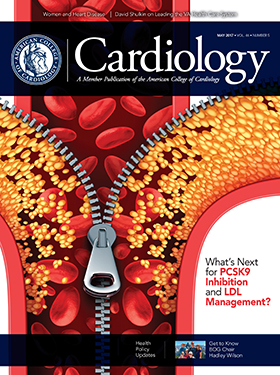New research exploring type 1 and type 2 diabetes diagnosis trends in youth and the long-term incidence rates of cardiovascular disease and mortality in adults was published April 12 in The New England Journal of Medicine. Read More >>>
Results from a study by Elizabeth J. Mayer-Davis, PhD, et al., found a significant increase in the number of youths diagnosed with type 1 and type 2 diabetes from 2002 to 2012, particularly among Hispanics. The study analyzed data from the SEARCH study, which identified 11,245 type 1 diabetes patients (0-19 years old at diagnosis) and 2,846 type 2 diabetes patients (10-19 years old at diagnosis) at five clinical centers across the U.S.
Results showed that the unadjusted estimated incidence rates increased annually by 1.4 percent for type 1 diabetes and 7.1 percent for type 2 diabetes. The increase in type 1 diabetes diagnosis affected primarily Hispanic boys, whereas type 2 diabetes increases were seen across all age, sex, race and ethnic groups, except non-Hispanic whites at one clinical center.
“These findings highlight the critical need to identify approaches to reduce disparities among racial and ethnic groups,” the authors conclude. “Longer follow-up will be required to establish long-term trends.”
Meanwhile, a separate study, by Aidin Rawshani, MD, et al., found that a combination of improvements in patient education, management of risk factors and advances in clinical decision-making support may have contributed to marked reductions in cardiovascular disease and mortality among Swedish adults with type 1 or type 2 diabetes.
The study included data from the Swedish National Diabetes Register and followed 36,869 patients with type 1 diabetes and 457,473 patients with type 2 diabetes until 2014. Over the 16-year study period, the mortality rate declined by 29 percent in the type 1 diabetes group and 21 percent in the type 2 diabetes group. Additionally, hospitalization for cardiovascular disease complications decreased by 36 percent among type 1 diabetes patients and 44 percent among type 2 diabetes patients.
“Although it is difficult to compare event-rate reductions across countries owing to differences in access to care, standards of clinical care, and diagnostic criteria for diabetes, our findings are generally consistent with trends in overall mortality and cardiovascular diseases associated with diabetes that have been observed in North America and Europe,” the study authors conclude.
In a related editorial comment, Julie R. Ingelfinger, MD, and John A. Jarcho, MD, FACC, explain that “the basic findings of these two studies, taken together, confirm the larger trends reported in the [Global Burden of Disease report for 2015].” They conclude that “it is clear that we are far from controlling the negative effects of diabetes on health worldwide. As the prevalence increases, we clearly need new approaches to reduce the burden of this disease on public health.”
Mayer-Davis EJ, Lawrence JM, Dabelea D, et al. N Engl J Med 2017;376:1419-29.
Rawshani A, Rawshani A, Franzén S, et al. N Engl J Med 2017;376:1407-18.
<<< Return to top
 Read the full May 2017 issue of Cardiology at ACC.org/Cardiology
Read the full May 2017 issue of Cardiology at ACC.org/Cardiology

